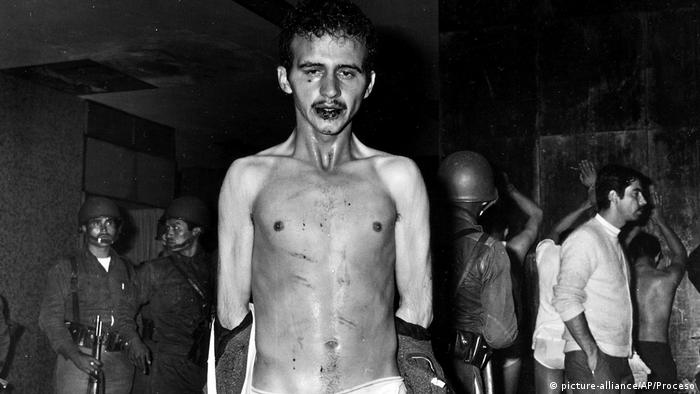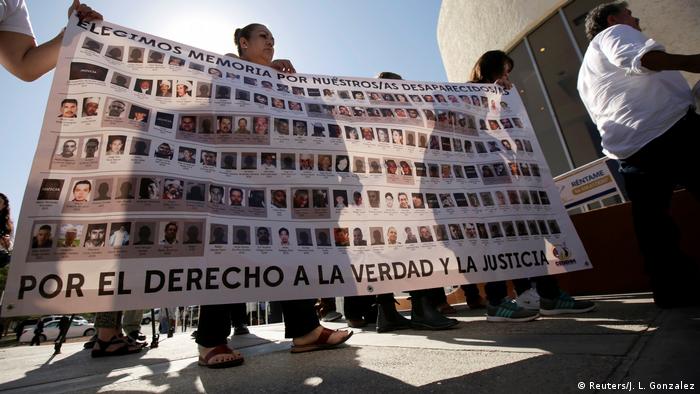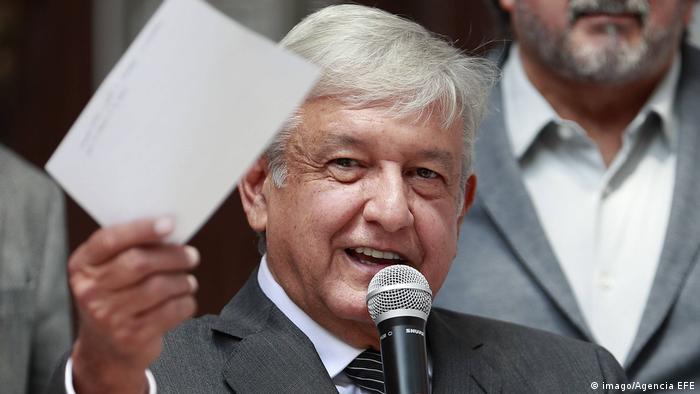The massacre of Tlatelolco is after 50 years still an open wound for Mexico. It is, according to many observers, a Symbol of impunity and violence, which the country suffers to this day.

50. Anniversary of the brutal state repression of the student movement of 1968 has come across in Mexico a debate about the aftereffect of this date for the country. The anniversary of the surprising result of an investigation by a government Commission that students were at the massacre of protesters to a state crime. The President of the state Commission for victims assistance (CEAV), Jaime Rochin, confirmed on the 25. September, that “the massacre of Tlatelolco stands for a time, in the Mexican state showed its autoritärstes face, and the voices of civil society, Silenced”.
Anne Hufschmid, researcher at the Free University of Berlin, who studied for 15 years the phenomenon of violence in Mexico, welcomes this recognition. “It is clearly important that an Organ of state, the massacre for the first Time as the recognition of what it was, a crime of the state, as it is already for decades by a myriad of experts, national and international activists, classified. But the recognition comes too late and does not come from the Federal government, or other authority with legal powers”. The reason you see any demands for reparation.
The ‘ 68 movement in Mexico
The year 1968 went down in the world as the year of student revolts and protests in the history. Hufschmid, who was taken by her parents to the student protests at the University and on the streets of Berlin, came out in the 90s to 25. The anniversary of the events of 2. October to Mexico. “In Mexico we looked at in ’68, less than a global event. The memory of this time is overshadowed by the Events of that day. Mexico 68 is ‘rather in the character of Repression, massacres and impunity,” says Hufschmid.
In the summer of 1968, the students protested for months against the authoritarian and repressive policies of the government and the “party of the institutionalized Revolution” (PRI).

Protesters are calling for a reappraisal of the past.
The government of then-President Gustavo Díaz Ordaz was just trying to present Mexico on the international stage as a country of progress, to get to the Olympic games in the Mexican capital. However, the protesting students were shouting on the streets: “We don’t want Olympics, we want Revolution”.
The Italian journalist and War correspondent Oriana Fallaci came to Mexico to report on the student protests, and took part in the 2. October to the rally in Tlatelolco part. About 8,000 had gathered, as at the end of the peaceful rally snipers from the roofs of the fire on the lot opened. Fallaci, who was wounded, later wrote that the attack on the students was worse than what she had experienced in Vietnam.
Offender: The Presidential Guard
“It was an atrocity, because they shot at a defenseless crowd. The sharp members of the presidential guard, firing indiscriminately at soldiers, police officers and students, scho were to protect,” says Sergio Aguayo, a political scientist at the learning Institute COLMEX in Mexico city. Aguayo was part of the former student movement, and examines the events since 1995. “We have found out the truth, to reach justice,” says the.

The President-elect, Andrés Manuel López Obrador, wants to disband the presidential guard.
The aim of the sniper fire to protect it, to spread Chaos and create a justification for repression of the protests. The counter-reaction of the military, transformed the square where the rally was held in a theatre of war. 37 of the Dead were officially identified. But estimates of more than 300 Victims.
The Mexican President’s guard, with more than 2000 members, is an elite corps for the personal protection of the President. The President-elect Andrés Manuel López Obrador, announced his intention of this unit to dissolve, as soon as he on 1. December takes office.
Anne Hufschmid emphasizes the reputation of the Public for justice and an honest examination. “The massacre of 2. October and the subsequent so-called dirty war on the part of the government was nothing more than a kind of state terrorism by the Mexican government in the 70s, selectively exercised. Without a functioning law enforcement, it will be difficult, the culture of impunity and break. It is one of the biggest obstacles to a true democracy in Mexico”.